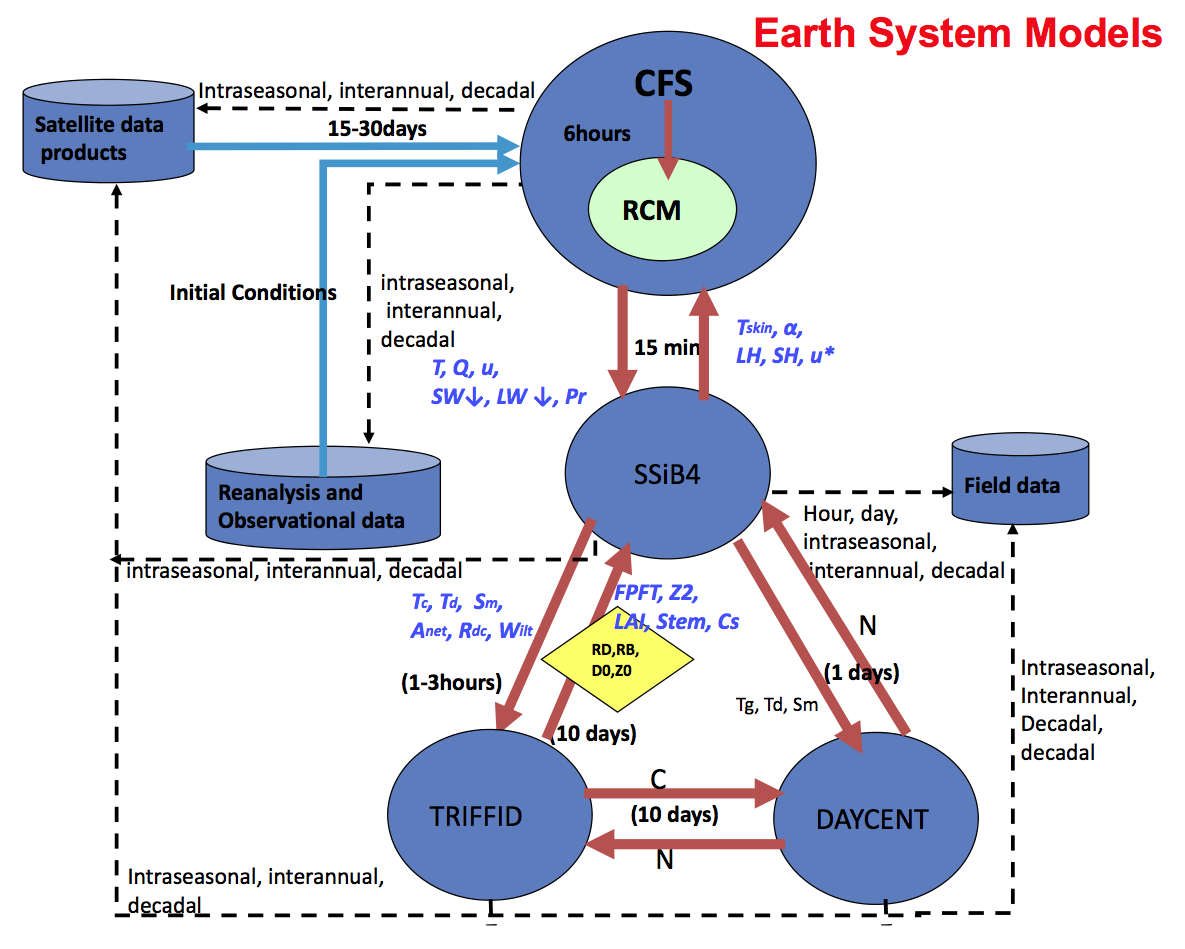Ea SM-3:Collaborative Res: Surface-induced forcing and decadal variability and change of the East Asian climate, surface hydrology and agriculture – A modeling and data approach
Overview
Significant dramatic decadal climate variability and change have occurred in East Asia (EA) during the past century, with a upward trend of dry area coverage. Studies suggest that EA climate variability is strongly influenced by surface-induced external forcings: sea surface temperature (SST), land surface processes, and aerosols. However, an interdisciplinary and synthetic study that includes all major surface-induced forcings has not been systematically conducted. General circulation model (GCM) studies with a single external forcing and one-way interaction have not been able to explain all the precipitation variances. The relative roles of the external forcings and their two-way interactions in the EA climate decadal variability and change have never been quantitatively examined.
Intellectual Merit
In this project, we will apply a fully-coupled Atmospheric/Ocean GCM/biophysical and biogeochemical models/dynamic vegetation model to: examine the improvements in predictions of EA climate variability and change due to surface-induced forcings, including land use and land cover change (LULCC) and dust and black carbon effects and their two-way interactions in reference to predictions in which one or more of those processes and interactions are neglected; to evaluate and attribute the role played in the EA climate variability by these factors and mechanisms; to examine the effects of those processes on future projections of that regional climate; and to estimate uncertainty through a set of experiments.
This coupled model is based on energy, water, carbon and nitrogen balances with a dynamic vegetation component, and critically links several major Earth system processes over a variety of spatial and temporal scales. Each model component has been extensively tested and evaluated in process studies. In this interdisciplinary research, we conjecture that a reliable prediction of EA decadal climate variability and change requires an interdisciplinary and synthetic approach that allows for consideration of all major surface-induced forcings and for proper representations of these forcings and their two-way interactions in the Earth System model (EaSM). Data from different sources, especially from observations in the Tibetan Plateau (TP), will be applied to evaluate model predictions. Recently available data will be used to specify LULCC. Six hypotheses will be tested and three objectives pursued. In addition, a regional climate model (RCM) with high resolution will be applied to assess the regional details of effects of surface-atmosphere interactions on the climate and ecosystem of EA, the TP in particular. Through the representation of key non-linear feedback processes in the EaSM, this project has the potential to substantially improve predictive capabilities and to further explain how different Earth processes and human activities have contributed to EA climate variability and changes over much of the last century. The key scientific issues addressed in this proposal will contribute to achieving the long-term goal of this NSF Call.
Broad Impact
EA climate variability and change have been recognized as critical components in global climate studies. Distinct climate features, strong coupling between EA climate and external forcings, controversy over the causes of EA climate variability, especially drought, and significant social and economic implications of EA climate variability make this region extremely important to the scientific community. This project will contribute to identifying the attribution of EA precipitation changes to anthropogenic and natural drivers and the effects of climate variability on the ecosystem and water resources. The TP is the source of major Asian river systems that support more than a billion people downstream. The results from this study will provide useful information for surface hydrology and agriculture, critical for a populous and economically vibrant part of the world. The tools for this EA study can be used for global and other regional studies and the state-of-the-art GCM and RCM developed in this project will be released to the research community. The results from this study will be distributed via the UCLA database. This proposed program will contribute to a number of educational outreach activities.


